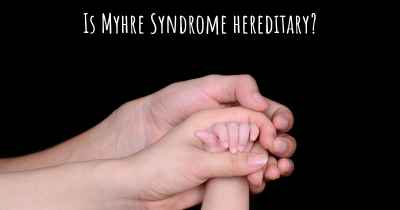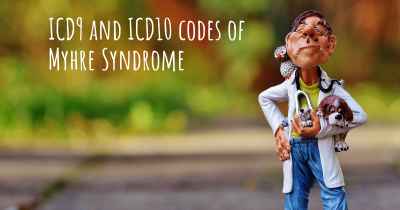What is the history of Myhre Syndrome?
When was Myhre Syndrome discovered? What is the story of this discovery? Was it coincidence or not?

Myhre Syndrome is a rare genetic disorder that was first described in the medical literature in 1981 by Norwegian physician Ola Myhre. The syndrome is characterized by a variety of physical and developmental abnormalities, including distinctive facial features, short stature, joint stiffness, and intellectual disability.
The discovery of Myhre Syndrome:
In the early 1980s, Dr. Ola Myhre encountered several patients with similar clinical features and recognized that they shared a common underlying condition. He conducted extensive research and clinical examinations, documenting the unique characteristics of these individuals. Dr. Myhre published his findings in a medical journal, officially identifying and naming the syndrome after himself.
Clinical features and diagnostic criteria:
Myhre Syndrome is primarily characterized by distinct facial features, including a round face, a broad forehead, a depressed nasal bridge, a wide nasal tip, and a thin upper lip. These facial characteristics are often considered the most recognizable signs of the syndrome. Additionally, affected individuals typically have short stature, joint stiffness, and limited joint mobility, which can lead to difficulties in movement and coordination.
Genetic basis:
Research into the genetic basis of Myhre Syndrome has revealed that it is caused by mutations in the SMAD4 gene. The SMAD4 gene provides instructions for producing a protein that plays a crucial role in the transforming growth factor-beta (TGF-β) signaling pathway. This pathway is involved in regulating various cellular processes, including cell growth, differentiation, and development. Mutations in the SMAD4 gene disrupt the normal functioning of the TGF-β signaling pathway, leading to the characteristic features of Myhre Syndrome.
Prevalence and inheritance:
Myhre Syndrome is an extremely rare disorder, and its exact prevalence is unknown. Since its initial description, only a limited number of cases have been reported in the medical literature. The syndrome appears to affect males and females equally.
Myhre Syndrome is thought to be inherited in an autosomal dominant manner, which means that an affected individual has a 50% chance of passing the condition on to each of their children. However, most reported cases of Myhre Syndrome have occurred sporadically, meaning they are not inherited from a parent and likely result from new mutations in the SMAD4 gene.
Management and treatment:
As Myhre Syndrome is a rare disorder, there is currently no specific cure or targeted treatment available. Management of the syndrome typically involves a multidisciplinary approach to address the various medical, developmental, and educational needs of affected individuals. This may include regular medical evaluations, physical and occupational therapy, speech therapy, and special education programs tailored to the individual's specific needs.
Conclusion:
Myhre Syndrome is a rare genetic disorder characterized by distinct facial features, short stature, joint stiffness, and intellectual disability. It was first described by Dr. Ola Myhre in 1981, who identified and named the syndrome based on his research and clinical observations. The syndrome is caused by mutations in the SMAD4 gene, disrupting the TGF-β signaling pathway. Although there is no specific cure for Myhre Syndrome, a multidisciplinary approach can help manage the various aspects of the condition and improve the quality of life for affected individuals.








